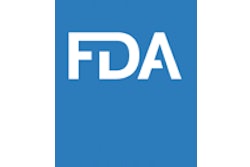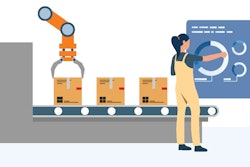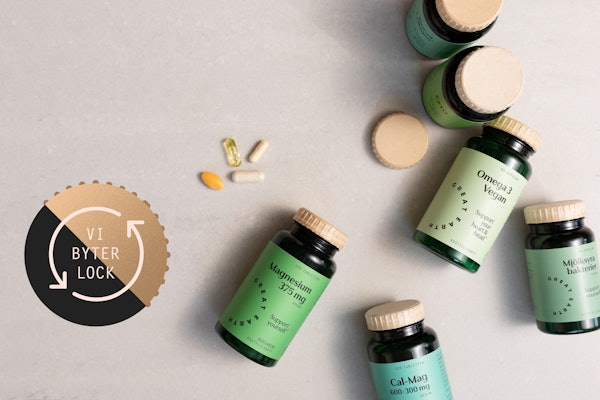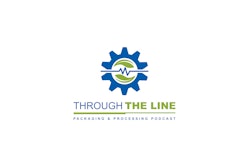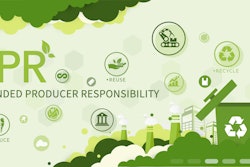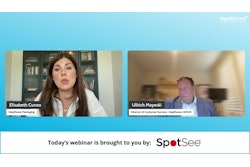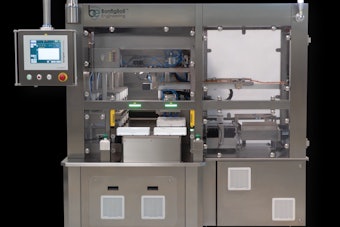With over 2,000 exhibitors, PACK EXPO Las Vegas could be a daunting endeavor for a first-time attendee or even someone with dozens of shows under their belts. Preparation is king. Today’s episode unlocks a few tricks when attending PACK EXPO Las Vegas with Ervin Hardee, a senior engineer at Procter and Gamble. Hardee walks us through how he prepares for PACK EXPO, how he executes his plan once he arrives at the show, and even includes an invaluable tip on just how important the last day of a trade show can be if it is handled correctly.
Tune in to discover his golden advice for maximizing each day of the show. Whether you're a rookie or a veteran, Hardee's insights will help attendees conquer PACK EXPO like a pro!
To subscribe, rate, review, and find more unPACKED podcast episodes, visit pmmi.org/podcast or find us on Apple Podcasts, Spotify, iHeart Radio, or wherever you listen to your podcasts.
Sean Riley:
So with all the fancy introductions out of the way, welcome to the podcast Ervin.
Ervin Hardee:
How you doing? Thank you.
Sean Riley:
Ah, I'm doing great, and we appreciate you taking time out of your day to come on here with us to talk about the show. I guess to kick things off, before you even start planning for the show or even know that you're going to be attending PACK EXPO, what do you gather together on your end regarding projects or potential projects that you know might have that in the pipeline down the road, how do you prepare for that ahead of time?
Ervin Hardee:
We typically have a list of current project needs that we have. Some of it's adding on capacity. Some of it's new to the world. So we look at those project lists and see what equipment that we need to be looking at. We also look at the pipeline and see what's upstream for project needs. We're always pushing the limit on capacity and throughput, and quality, so we just want to make sure we can capture or see what's out there for us to look at. And we are also looking for opportunities for the biggest trend now is E-commerce, customization, sustainability, and I mentioned reliability. But a lot of the staffing issues that come around with COVID, we're looking at how can we have savings and staffing reduction in digital and the AIs that are coming up. But we just look at everything that we can benefit from.
Sean Riley:
And that's what I was going to say. So you have projects, and you have potential projects, but you're also leaving open the idea that there's a bunch of different, and you ran down a laundry list of opportunities and topics that are out there that you're going to stumble upon as you go across the show floor.
Ervin Hardee:
Well, yeah. And this show, I mean, it's so many equipment vendors and all, and it's just nice to see what's being innovative and new to the world and what people are offering. There's always something new at these shows. It's very beneficial.
Sean Riley:
So you have your formal idea of the projects and what things you want to hit on. How do you utilize some of the tools that I guess PMMI provides, whether it's My Show Planner or the Game Plan, things like that, to prepare yourself so you're not just stumbling in on day one and trying to put together visiting 2000 different booths.
Ervin Hardee:
I take a look at all the vendors that have signed up to present and be at the show. And then, I get online and do the Game Plan by particular areas. If I need a particular packing equipment like a cartoner or a converter or labeler or whatever, I look at all the vendors and highlight them and develop the game plan. PMMI is very good at providing that list of stuff. And they actually send the printed copy of the Game Plan. One other thing that I look at is a lot of the innovation sessions for training, a lot about what's going on and what's new to the world by attending some of those sessions. A little bit of pre-work really makes it flow a lot better.
Sean Riley:
Awesome. And I think that's something for our listeners to remember to take advantage of the My Show Planner and the Game Planner, things that are going to help you ahead of time, know again because when you can get there and there's 2000 exhibitors, it can be a little bit overwhelming for people. So I guess the show arrives for you, and you wake up, you have your breakfast, your coffee. You're ready to go. Do you have a plan for each day? Is it a little bit loose? How exactly do you approach the actual, "Now I'm on the show floor, and this is how I'm going to do it?"
Ervin Hardee:
Well, there's two approaches. One, if I only have a couple of days, I pick and choose what vendors I want to go see quickly. But if I'm going to stay the whole show in Chicago four days and Las Vegas for three days, I normally take the first day, maybe two days, and just do a quick tour of the floor, looking at the vendors and looking what's out there with the suppliers. And I'm just focusing on what's new, what's out of the box technology, taking a look at vendors and comparing them one to the other from simplicity and just the simple designs that they have. And it's a good opportunity to just compare the vendors and suppliers side by side where you can see them that you don't normally get to see on a everyday basis.
Sean Riley:
And then, as the show goes about, do you have a plan for follow-up to that?
Ervin Hardee:
The work plan or the plan that I have, I take that and mark the vendors, and I also make a list of the vendors and suppliers that I didn't know or didn't see or that are new. We're looking for long-term relationships and what they can offer, but then I make that list so I can come back and talk to them at the end of the show.
Sean Riley:
Perfect. So then you indicated, as you just said, that you like to circle back on the last day for more conversations. Is that just people that you've touched base with, or like you said, is there potential brand new ones in there? Do you have them sort of rated out saying, "This is someone I have to talk to on the last day, and this is someone, if I have time, I'm going to talk to on the last day?" How do you go about organizing that?
Ervin Hardee:
On the first couple of days of the show, it's a lot of people, and the last couple of days of the show, it gives you more opportunity to have more in-depth discussions with the vendors. I actually make an effort to see the vendors that I normally deal with in a non-problem area, give them feedback, see what they got to offer, just a general discussion. They ask how things are going. And it's good to develop that long-term relationship. But then I go look at new vendors, see what they have to offer around throughput, quality, cost, design. Not just selling me a piece of equipment, but I want the long-term relationship to help install it, start-up, and support it for the life of the equipment. Schedule, cost, safety requirements, all that stuff is very important, and it's a good opportunity to talk to the vendors when you're not committed. Do the due diligence to make sure it's a fit between both of us.
Sean Riley:
And it also sounds like you can earmark vendors that you might not need now, but perhaps something down the road you could use.
Ervin Hardee:
A lot of times, we look at equipment, say E-commerce, and we look at it from a tier one, tier two, and tier three where we may not need that max output in the beginning., and we start out small, and then we go to a higher throughput, and then the third is another throughput. So it's nice to see all the vendors and what they offer from a cost perspective and throughput. And it just gives you a good chance to compare vendors and equipment and see what really fits your need at this point in time. All our products don't sell at max capacity right in the beginning, so a lot of them start out small. But I want to know when I do need max capacity, I know what vendors to go to.
Sean Riley:
That's interesting for planning down the road. I hadn't taken that into consideration. Okay, so now, three days on the show floor, you've put your legwork in. When the show's over, how do you go about handling your post-show follow-up, and is it something that you jump right into as soon as the show's over? Do you take a couple of days to organize your thoughts?
Ervin Hardee:
The current project needs, we normally start the conversation really quickly, follow up meetings, calls. Sometimes that vendor will visit our site, or we visit their site. Or if they have equipment at another customer that allow us to come in and look at it, we visit them, start reviewing the specs and requirements around cost, schedule, safety, throughput, design, reliability. After all that, we go for a budgetary quote. And we normally get three budgetary quotes for the same like equipment to see what value they add. And then it just moves to the next level of funding once we have a fit between us.
Sean Riley:
So when you identify vendors and stuff on the show floor, you can turn this around relatively quickly for the needs that you might have on a project you're already working on?
Ervin Hardee:
For the current needs, upstream, sometimes that takes a little bit longer because we are developing new products and new packaging and all, and we have to develop the package to fit the vendor. And a lot of times, the vendor will provide input on the package design, which adds to that partnership, and it adds where we don't have to go back and do a lot of rework in the end with the vendor. They're in it from the beginning of the design, so it makes it a lot easier to transition, and the equipment works a lot better.
Sean Riley:
Oh yeah, that sounds perfect. And the whole approach that you have from pre to during the show to after the show really sounds like a highly intelligent way to tackle something, again, as daunting as PACK EXPO can be for someone that hasn't been there before. But you seem to be a veteran of this and have really put together a pretty good plan.
Ervin Hardee:
Well, I'll tell you the show offers a chance for you to look at all the equipment where I don't have to get on the phone and keep asking questions where I can't see it. You can actually see it and talk to the person in person and that develops that relationship versus on the phone, you don't know really what they're offering or what they're talking about. But a picture or a demonstration is worth that 1,000 words. It just adds so much value to see it.
Sean Riley:
Awesome. And that's a good way to put a button on how important it is to attend these trade shows. So I want to thank you, Ervin, for taking time out of your busy day I know to come on here. And from what I understand, this was your first podcast, and you did an excellent, excellent job of laying out there what we need to do if we're an attendee attending PACK EXPO Las Vegas. So thanks again for coming on here with us.
Ervin Hardee:



